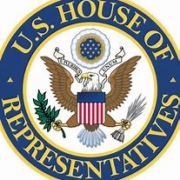Inflation Creeping into Personal Finances
If you have a balance on a credit card or an adjustable-rate mortgage, you might be noticing changes in your payments. Higher interest rates are starting to ripple through the personal finance landscape, and it doesn’t look like that trend will change anytime soon.
The Federal Reserve has indicated it plans to keep raising short-term interest rates to help manage inflation, which is at its highest level in 40 years. You’re likely seeing the effects of inflation when buying gas or groceries, and you’ll notice it if you are shopping for a new or used car.
The Federal Reserve’s job is to control inflation. By raising interest rates, the Fed hopes to slow spending, bringing down consumer prices.
Time will tell whether higher interest rates will prompt us to consider changes to your portfolio. Remember, your overall strategy considers that there will be transition periods in the economy.
In the meantime, you may want to look at I Bonds, which are issued by the U.S. government and earn a fixed interest rate plus a variable interest inflation rate that’s adjusted twice a year. I Bonds have certain purchase limits, restrictions, and tax treatments, so they generally play a limited role in your financial picture.
If you have any questions about inflation or interest rates, please reach out. We’re always here to help put things into perspective.



